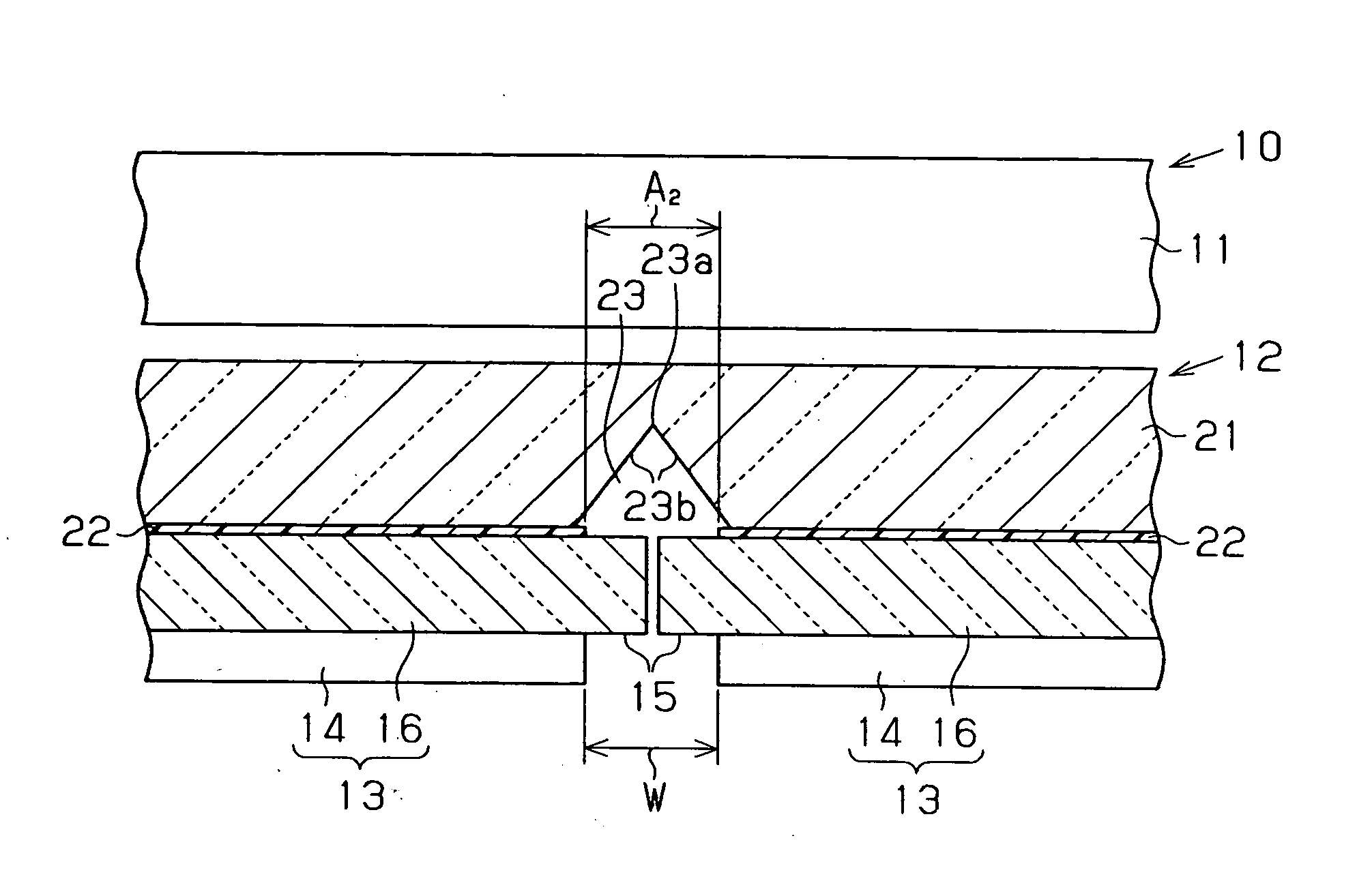Lighting apparatus
a technology of light-emitting apparatus and light-emitting layer, which is applied in the direction of lighting and heating apparatus, discharge tube luminescnet screen, instruments, etc., can solve the problems of reducing yield, difficult to uniformly form an el layer in a large area, and extremely thin el elements
- Summary
- Abstract
- Description
- Claims
- Application Information
AI Technical Summary
Benefits of technology
Problems solved by technology
Method used
Image
Examples
first embodiment
[0036] A lighting apparatus 12 according to the present invention will now be described referring to FIGS. 1(a) to 4(b). The lighting apparatus 12 is used as a backlight of a liquid crystal display 10. In the cross-sectional views, part of hatching is omitted.
[0037] As shown in FIG. 1(a), the liquid crystal display 10 includes a transmissive liquid crystal panel 11 and the lighting apparatus 12 located on the back of the liquid crystal panel 11, or on a surface at a side opposite to a display surface. The lighting apparatus 12 has luminescent panels 13. Each luminescent panel 13 includes a light emitting portion 14, which emits isotropic light, and a non-light emitting portion 15 provided around the light emitting portion 14. The luminescent panels 13 are arranged so that the non-light emitting portions 15 are arranged adjacent to each other. The number of the luminescent panels 13 is determined according the size of each luminescent panel 13 and the size of the lighting apparatus 1...
second embodiment
[0069] However, in the second embodiment, the diffusion portions 24 are provided on sections of a surface of the brightness compensating member 21 that faces the luminescent panels 13 except for the V-shaped grooves 23. A space exists between each diffusion portion 24 and the corresponding luminescent panel 13. Thus, light that exits each luminescent panel 13 is incident on the brightness compensating member 21 through a layer of air. Since the refractive index of air is 1.0 and the refractive index of the transparent substrates 16 is 1.5, the angle of refraction at the layer of air is greater than the incident angle of light from the luminescent panel 13 to the layer of air due Snell's law. Thus, light that is incident on the layer of air from the luminescent panel 13 at a large incident angle is hardly incident on the brightness compensating member 21, while light emitted frontward from each luminescent panel 13, that is, light emitted in a direction along the thickness of the bri...
third embodiment
[0078] In the third embodiment, since the second V-shaped grooves 26 are formed on a surface of the brightness compensating member 21 that is opposite to the surface on which the V-shaped grooves 23 are formed, the depth A1 of the V-shaped grooves 23 can be reduced for the same viewing angle. The thickness of the brightness compensating member 21 is reduced, accordingly. For the same thickness of the brightness compensating member 21, the viewing angle can be increased.
[0079] Referring to FIGS. 8(a), 8(b), and 8(c), the procedure for obtaining equations for computing the viewing angle θ and setting the thickness of the brightness compensating member 21 will now be explained. As shown in FIGS. 8(a) and 8(c), the equations for the lower side of the brightness compensating member 21 are the same as those in the first embodiments, and the equations (3), (5), and (6) are satisfied. However, in the equation (6), γ1 represents the angle defined by light that is incident on an inclined surf...
PUM
 Login to View More
Login to View More Abstract
Description
Claims
Application Information
 Login to View More
Login to View More - R&D
- Intellectual Property
- Life Sciences
- Materials
- Tech Scout
- Unparalleled Data Quality
- Higher Quality Content
- 60% Fewer Hallucinations
Browse by: Latest US Patents, China's latest patents, Technical Efficacy Thesaurus, Application Domain, Technology Topic, Popular Technical Reports.
© 2025 PatSnap. All rights reserved.Legal|Privacy policy|Modern Slavery Act Transparency Statement|Sitemap|About US| Contact US: help@patsnap.com



